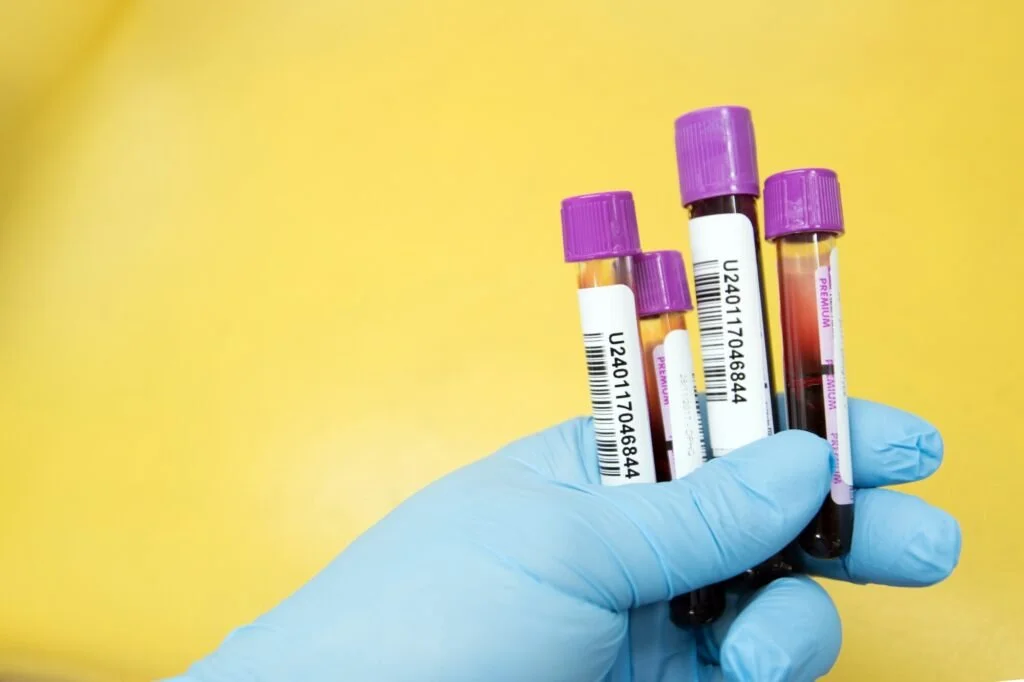Pain Level During Butterfly Needle Blood Draw
Getting blood drawn can be a nerve-wracking experience for many people. The fear of needles and the anticipation of pain can make the process seem daunting. However, one type of needle that is often used for blood draws, called the butterfly needle, is known for being less painful than traditional needles. In this article, we will explore the pain level during butterfly needle blood draws and provide tips for minimizing discomfort.
Butterfly Needle Advantages In Phlebotomy
Butterfly needles, also known as winged infusion sets, are commonly used in phlebotomy procedures for drawing blood from patients. These needles are smaller and thinner compared to traditional venipuncture needles, making them ideal for patients with small or fragile veins. Butterfly needles have several advantages in phlebotomy procedures, which we will discuss in this article.
Butterfly Needles Versus Traditional Needles
When it comes to drawing blood or administering medication, healthcare professionals have a choice between using butterfly needles or traditional needles. Both types of needles have their own advantages and disadvantages, and the decision of which one to use can depend on a variety of factors. In this article, we will explore the differences between butterfly needles and traditional needles, as well as when it might be more appropriate to use one over the other.
Blood Draw With Butterfly Needle Procedure
For many people, the thought of having blood drawn can be intimidating. However, it is a very common procedure that is necessary for various medical tests and treatments. One method that is often used for blood draws is the butterfly needle technique. This procedure involves using a small, butterfly-shaped needle to draw blood from a vein. In this article, we will provide a comprehensive guide to the blood draw with butterfly needle procedure.
Butterfly Needles Use In Pediatric Patients
Butterfly needles, also known as winged infusion sets, are commonly used in pediatric patients for blood draws and IV placements. These needles are smaller and less intimidating than traditional needles, making them ideal for use in children. In this post, we will explore the benefits of butterfly needles in pediatric patients and discuss why they are often the preferred choice for medical professionals.
Butterfly Needles For Blood Draw Sizes
Butterfly needles, also known as winged infusion sets or scalp vein needles, are a popular choice for drawing blood in healthcare settings. They are especially useful for patients with fragile veins, as the smaller gauge and shorter length of butterfly needles can help reduce the risk of vein damage and hematoma formation. In this article, we will discuss the different sizes of butterfly needles available and their uses
Butterfly Needles For Blood Draw
Butterfly needles, also known as winged infusion sets or scalp vein needles, are a popular choice for drawing blood in healthcare settings. They are especially useful for patients with fragile veins, as the smaller gauge and shorter length of butterfly needles can help reduce the risk of vein damage and hematoma formation. In this article, we will discuss the different sizes of butterfly needles available and their uses.
Effectiveness of 23G Needle vs 21G Needle
Needles are a crucial tool in the medical field, particularly in administering medications or taking blood samples. When it comes to injections, the size of the needle can play a significant role in the effectiveness of the procedure. Two common needle sizes used in medical settings are the 23g needle and the 21g needle. In this blog post, we will explore the effectiveness of these two needle sizes and discuss their potential advantages and disadvantages.
Real-Life Situations To Use 23G Or 21G Needle
Needles are essential tools in the medical field, used for various procedures such as injections, blood draws, and administering medications. When it comes to choosing the right needle gauge, healthcare professionals must consider factors like the patient's age, medical condition, and the medication being administered. In this article, we will explore the real-life situations where a 23g or 21g needle is most suitable.
Usage Of 21G Needle Vs 23G Needle
When it comes to administering injections, healthcare professionals have a variety of needle sizes to choose from. One common decision that needs to be made is whether to use a 21g needle or a 23g needle. Both sizes have their own advantages and disadvantages, and it's important to understand the differences between the two before making a decision. In this article, we will explore the usage of 21g needles versus 23g needles in the healthcare setting.
When to Use 23G vs 21G Needles
Choosing the right needle gauge is crucial in the field of medicine. The size of the needle can impact the injection process, patient comfort, and medication delivery. Two common needle gauges used in medical practice are 23g and 21g needles. In this article, we will explore the differences between these two sizes and when it is appropriate to use each.
Drawbacks Of 21G Compared To 23G Needles
When it comes to choosing the right needle size for injections, healthcare professionals must consider various factors to ensure the safety and comfort of the patient. One common debate in the medical field is the use of 21g needles versus 23g needles. While both have their own set of advantages, this article will focus on the drawbacks of using 21g needles compared to 23g needles.












